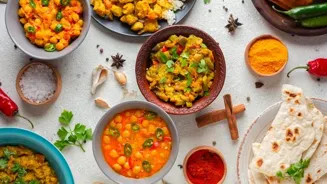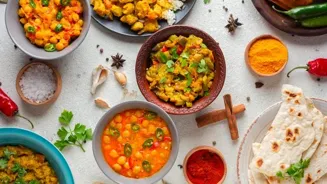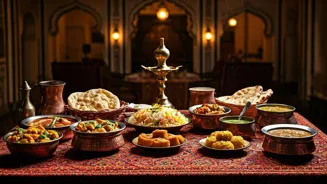Dive into the bustling world of Indian street food, where culture, economics, and community converge. Read more to uncover the flavorful tales of vendors, the culinary traditions, and the social dynamics
that make street food an essential part of major Indian cities
Street food, a vibrant and integral part of India's culinary landscape, is much more than just a quick bite. In bustling metropolises like Mumbai, Delhi, Kolkata, and Chennai, it represents a cultural phenomenon, an economic engine, and a social leveler.
From the iconic vada pav of Mumbai to Delhi's delectable chole bhature, each city boasts a unique street food identity, reflecting its history, local ingredients, and the ingenuity of its vendors.
These edible offerings narrate stories of migration, adaptation, and the ever-evolving palates of the urban population. Street food stalls become melting pots where people from all walks of life converge, sharing a common love for delicious and affordable meals.
The aroma of spices, the sizzle of hot oil, and the lively chatter create an atmosphere that is quintessentially Indian, adding to the charm and character of these major cities.
Indian street food boosts urban economy, offers livelihoods, and food security
Indian street food is a significant contributor to the urban economy, providing livelihoods for millions of vendors and their families. For many, it's a pathway to entrepreneurship, requiring minimal initial investment and offering the potential for significant returns.
These small-scale businesses not only generate income for the vendors but also support a network of suppliers, farmers, and transport workers.
The street food sector plays a crucial role in providing affordable meals to a large segment of the population, including students, daily wage laborers, and office workers.
Often, these individuals rely on street food for their daily sustenance, making it an essential component of urban food security.
Government initiatives aimed at formalizing and regulating the street food sector can further enhance its economic impact, ensuring hygiene standards, promoting sustainable practices, and providing vendors with access to credit and training.
Street food vendors preserve culinary traditions, promote cultural exchange
Street food vendors are often custodians of culinary traditions, preserving age-old recipes and cooking techniques passed down through generations. Many street food dishes are regional specialties, reflecting the unique cultural heritage of a particular area.
These culinary traditions evolve over time, adapting to changing tastes and incorporating new ingredients, while still retaining their essential character.
Street food vendors play a vital role in promoting cultural exchange, introducing people to diverse regional cuisines and fostering a sense of culinary appreciation. For instance, a dosa vendor in Mumbai might offer a taste of South India to customers from all corners of the country.
The food becomes a way to connect with one's roots, with one's culture. Experiencing a slice of one's home culture in another city.
Street food unites diverse people, fostering community and camaraderie
Street food transcends social and economic barriers, creating a common ground where people from different backgrounds can interact and connect.
At a bustling street food stall, you'll find people from all walks of life – students, professionals, laborers, and tourists – all united by their shared love for delicious and affordable food.
Street food vendors often develop personal relationships with their customers, creating a sense of community and belonging. The shared experience of enjoying a meal together can break down social barriers and foster a sense of camaraderie.
Street food stalls often become informal gathering places, where people can socialize, exchange news, and build relationships. It provides a means to come together and connect with people.
Street food: Convenient, affordable option for urbanites short on time
Street food offers a quick, convenient, and affordable meal option for busy urban dwellers. In cities where time is a precious commodity, street food provides a readily available alternative to cooking at home or eating at expensive restaurants.
The sheer variety of street food options ensures that there's something to suit every taste and budget. Street food vendors are often strategically located near public transportation hubs, office complexes, and educational institutions, making it easy for people to grab a bite on the go.
The availability of street food helps to reduce the burden of cooking for many individuals and families, freeing up time for other activities. Street food provides a solution in situations where people cannot cook for themselves.
Street food vendors innovate for hygiene, sustainability, and safety, adapting to consumer needs
Street food vendors are increasingly adopting innovative practices to enhance hygiene, ensure food safety, and promote sustainability. Many vendors are using eco-friendly packaging, sourcing ingredients from local farmers, and implementing waste management strategies.
Awareness campaigns focused on food safety and hygiene are helping vendors to improve their practices and build consumer trust. Government initiatives aimed at providing training and support to street food vendors are also contributing to the improvement of standards.
The use of technology, such as mobile payment systems and online ordering platforms, is making street food more accessible and convenient for customers. Street food vendors are becoming increasingly professional and entrepreneurial, adapting to the changing needs of the urban consumer.
AI Generated Content. Glance/InMobi shall have no liability for the content












